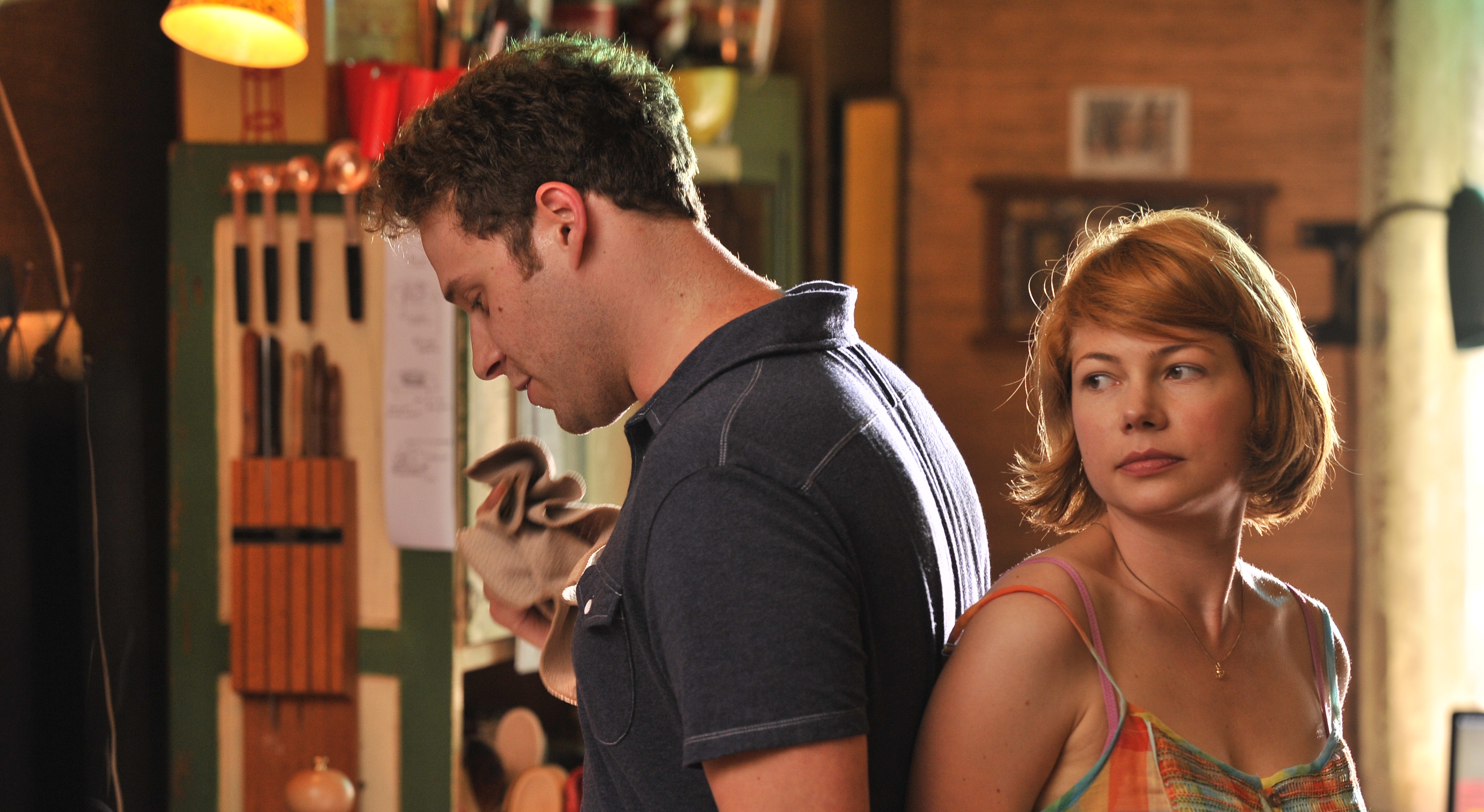by Chris Feil

Sarah Polley’s Take This Waltz gets its name from Leonard Cohen’s indelible song, announcing itself immediately as musically astute. The film is a nuanced look at love and personhood, following Michelle Williams’ Margot through her affectionately dull marriage and flirtatious dalliance with a handsome neighbor. Cohen’s track arrives towards the film’s close, a swirling punctuation point on the film’s observations on love and sex as escape before reality (and mounting baggage) sets in. It’s the film’s largest stylistic flourish, but its richest musical insights lie elsewhere.
Polley arranges what might first seem a hip assortment of tracks, all acoustics and Feist. But it’s how she utilizes them to organically reveal what is happening beneath Margot’s surface, the distance between what she thinks she’s going through and the isolation that underlies it. Instead of the common escapist swoon of movie music signifying words left unsaid by future lovers, we’re given more pensive tracks to suggest the words Margot cannot find. In one scene, Margot sits in her kitchen with the music playing while her husband Lou is on the other side of the window; Polley cuts back and forth between them, with the music barely a whisper when we’re on Lou’s side of things.
But the musical peak comes in the most unexpected of retro tracks, a one hit wonder to cast a glow over this burgeoning relationship destined for its own limited success. Somehow Polley turns the kitsch of The Buggles’ “Video Killed the Radio Star” into a vessel for profound pathos.
The song choice already comes with enormous cultural baggage, famously having been the first music video to usher in MTV. Its legacy will always be tinged with the suggestion of something ending and something beginning, of the allure of the shiny new thing so enticing we ignore the death of the old. Maybe we embrace the new because it fulfills a void, maybe we just habitually fill voids. Maybe we’re the void. It’s a frivolous boppy track that will never escape such interpretations because of the context in which it arrived.
The film borrows that legacy subversively to the moment. It’s a tackily appropriate song in the moment as Margot and her new suitor Daniel take in a carnival ride, the bisexual lighting that shrouds them like their feelings and optimism radiating out of their bodies. The track continues in upbeat glee as they swing about getting lost in the feeling. It’s like they are dancing in the flames of their indiscretion, indulging fantasy while Margot’s marriage is the song’s burning history. It’s not a sex scene, but its not not a sex scene.
And suddenly it’s over. When the lights come back on and the song violently ends mid-swing, it’s a cruel warning that not all feelings last. We see what’s coming that Margot cannot.
When the song returns at the film’s close, it has noticeably less pull when plopped into Margot and Daniel’s eventual domesticity. But then we’re flashed back into it’s full power, this time with Margot alone on the ride. You could easily take a more solemn interpretation of the ending, but that would be to ignore that the song itself is about new beginnings, ones that you can’t stop from coming. This time, there is hope in a future that’s all her own.
All Soundtracking installments can be found here!